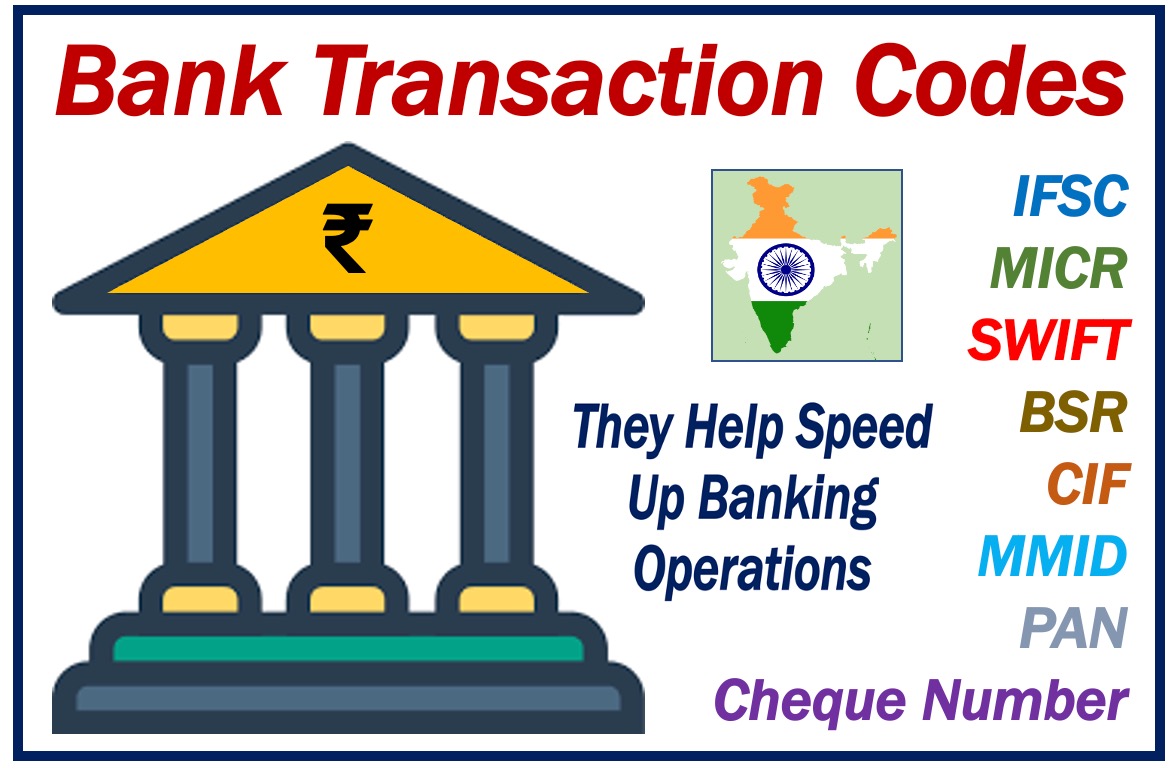Over the years, there has been the implementation of new systems in the banking industry to support the functioning of the banks and their operations. One of these new systems includes transaction codes. With the introduction of these new transaction codes, they have significantly aided in accelerating operations in the banking industry.

Let us understand in this post today, what are the bank transaction codes and their significance and usage.
1. IFSC (Indian Financial System code)
These are 11 figure codes used to initiate transactions between banks. The use of IFSC codes, it makes it easier for RBI to keep track of transactions and make them secure.
Systems like NEFT (National Electronic Fund Transfer) and RTGS (Real Time Gross Settlement) in India employ the IFSC number to transfer money between bank accounts. Therefore, each time money is transferred from one bank to another, the IFSC number is needed.
Of the 11 figures, 4 of the initial figures correspond to the respective bank and the remaining 7 figures denote the bank branch. However, the fifth figure is 0 which is reserved for future use.
2. MICR (Magnetic Ink Character Recognition) :
Unlike IFSC, MICR consists of a 9-figure code which is used to identify the location of the bank branch. MICR codes are printed on cheques. MICR ensures ethical and smooth processing of transactions.
The major role played by MICR is an error-free transaction and accelerates the clearing process. The usage of MICR can improve security and reduce financial losses.
The first 3 initial figures denote the city of the bank, the next three figures denote the bank and the last three figures denote the bank branch.
3. Cheque Number
These codes consist of 6-digit numbers developed to recognise a cheque. These codes are printed on a cheque leaf which provides the status of the cheque. These codes are printed at the bottom of the cheque leaf right next to the MICR code.
4. SWIFT Code (Society of Worldwide Interbank Financial Telecommunication)
These codes are also known as BIC and the SWIFT code is a network developed to initiate transactions internationally and in a secured manner. These are combinations of 8 to 11-figure codes and signify the required details. The first four alphabets SBIN signify the city, the next two digits IN signify the country, the next two digits BB signify the location and the last three digits indicate the bank branch.
5. BSR (Basic Statistical Return)
This unique code is assigned by RBI for all the registered banks in India. These codes help in tracking all the online transactions of a tax nature and help in providing details and information about the transactions to the income tax department.
These codes consist of 7 numerical digits. The first three digits indicate the bank and the last four digits indicate the branch.
6. CIF Number (Customer Information Number)
The CIF number holds all of the banking information for an account holder, including information about loans, Demat accounts, KYC information, etc. It is issued by the bank at the time of account opening.
The respective banks have the authority to access the CIF number to fetch details of the concerned account holders. These numbers are used for maintaining transparency and malpractices, they are printed on the front page of the passbook. The numbers depend on the banks and usually CIF numbers consist of 8 to 11 digits.
7. MMID (Mobile Money Identifier)
MMID works with IMPS (Immediate Payment System) to initiate transactions. It is a seven-digit unique code issued to a bank account. These codes are used to do transactions from smartphones. One can use MMID to initiate or transfer funds to another bank account through the Immediate Payment Service (IMPS).
Both the sender and the receiver must have MMIDs for their respective bank accounts to start an IMPS transaction. Both the sender’s and the receiver’s MMIDs must be connected to their respective phone numbers for an IMPS transaction to be completed. One can link all of their MMIDs to the same mobile phone if they have numerous bank accounts.
8. PAN (Permanent Account Number)
PAN is a special 10-figure code issued by the Income-tax Department. The PAN number functions as an electronic system that stores all of a taxpayer’s tax-related data in one location.
PAN is required to initiate any form of financial operations. Customers are given a PAN Number in the form of a plastic card known as a PAN Card.
Conclusion
The banking industry may look effortless and easy to function from a customer’s perspective. However, to ensure smooth functioning and error-free operation, there are numerous codes which make it possible, for a seamless and hassle-free operation.
The customers must know the significance of these codes and abide by the regulations to avoid any sort of inconvenience.
Interesting related article:

